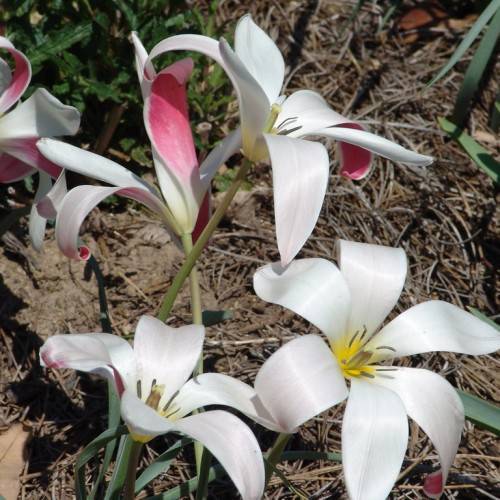
lady tulip
Tulipa clusiana 'Lady Jane'
Cycle:
Perennial
Watering:
Average
Hardiness Zone:
3 - 7
Flowers:
Flowers In Spring
Sun:
Full sun
Leaf:
Yes
Growth Rate:
Low
Maintenance:
Low
Drought Tolerant:
Yes
watering
Lady tulips needs to be watered deeply about once a week. Water should be applied to thoroughly soak the soil to a depth of around 12 inches. Be sure to check the soil moisture level with your finger before watering to avoid over or under-watering. Allow the soil to dry out between waterings. Lady tulips should not be allowed to dry out too much. They may wilt and become stressed if soil is allowed to dry completely. Be sure that these plants receive plenty of water during periods of hot weather.
sunlight
Lady tulips require full sun in order to thrive, so they need at least 6 hours of direct sunlight each day. This species of tulip can tolerate some afternoon shade as well. Ideally, Lady tulips should get morning sunlight and receive some shade from the midday and afternoon sun. It is important that Lady tulips are protected from strong midday and afternoon sun, as too much direct sun can take away from the vibrant colors of their petals and burn the delicate bloom.
pruning
Lady Tulip, also called Tulipa clusiana 'Lady Jane', does best with light pruning. During the growing season, remove any dead, diseased, or damaged leaves, stems, and flowers as they appear. After blooming has ended and the foliage begins to decline, you can prune back the plants by about 1-third to 1-half their height. In addition, you may want to deadhead (remove spent blossoms) throughout the season. This will help to keep the plant looking neat and encourage more flowers to bloom. Pruning at the end of the season will help encourage new growth in the spring.
